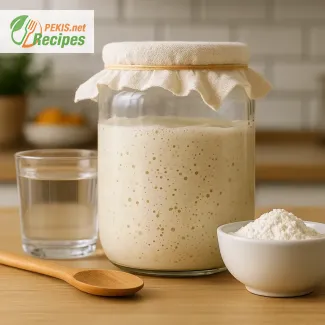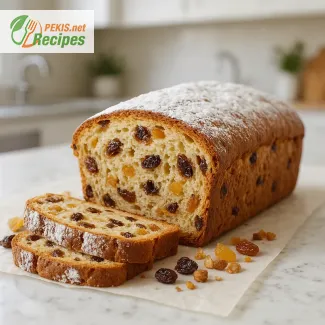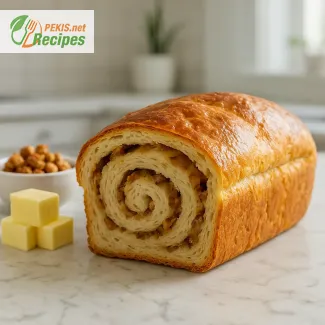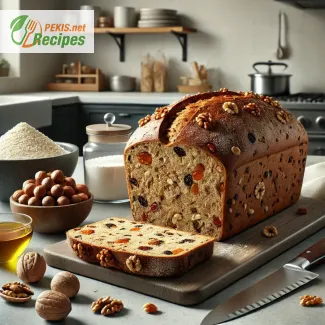
Mastering the Art of Wild Fermentation with a Fully Hydrated Sourdough Starter
Why 100% hydration is the gold standard for sourdough enthusiasts
Creating a 100% hydrated natural sourdough starter is more than just a traditional baking ritual—it's a commitment to flavor, resilience, and artisan quality. This type of starter, made with equal parts flour and water by weight, offers a perfect balance between activity and stability, making it an ideal base for a wide range of sourdough recipes. Whether you're new to wild fermentation or a seasoned home baker, understanding how and why to cultivate this specific kind of active sourdough starter is essential for consistent results and deeper flavor development in your bread.
What is a natural sourdough starter and why does hydration matter?
A natural sourdough starter is a living culture of wild yeast and beneficial lactic acid bacteria that thrives by feeding on flour and water. Unlike commercial yeast, sourdough fermentation is slower, but more complex, yielding superior texture, crust, and digestibility. Hydration refers to the ratio of water to flour, and 100% hydration means a 1:1 ratio by weight. This level of hydration encourages a robust microbial balance, promotes easier mixing, and allows for more predictable fermentation behavior.
High hydration starters tend to be more active due to the increased water content, which facilitates enzyme activity and microbial mobility. This makes them ideal for daily feedings, room temperature maintenance, and consistent leavening power. Moreover, 100% hydration aligns with the ratios used in many classic sourdough formulas, minimizing the need for adjustments.
The benefits of working with a 100% hydration starter
Choosing a 100% hydration starter brings a range of advantages, especially for those aiming for open crumb structures, tangy flavor, and reliable fermentation. Its pourable, thick batter-like consistency makes it easy to incorporate into doughs, and its regular feeding schedule fosters a strong, predictable rise. It is also the hydration level most commonly referenced in sourdough recipes, which ensures better alignment when following established formulas or sharing your own.
Other benefits include:
- Ease of use: Mixes quickly and evenly with flour and water.
- Versatility: Suitable for both rustic breads and enriched sourdough bakes.
- Scalability: Simple ratio for scaling up or down without recalculating hydration.
- Consistency: Maintains a stable pH and fermentation rhythm with proper care.
The science behind starter activity and hydration
Starter activity is influenced by several factors: flour type, temperature, feeding frequency, and hydration. At 100% hydration, a starter offers maximum microbial mobility, allowing yeast and bacteria to rapidly consume sugars and reproduce. This results in visible signs of activity such as bubbling, rising, and a fruity or tangy aroma. Flour types with higher enzyme and nutrient content—such as whole wheat or rye—can further boost microbial vitality.
Water temperature and ambient conditions also play a role. Warmer environments encourage faster fermentation, which can be beneficial during the initial cultivation phase. However, stability becomes key after the culture matures. A balanced, room-temperature environment and regular feedings will maintain a vigorous and reliable starter over time.
Troubleshooting and tips for maintaining an active starter
Even a well-maintained 100% hydration starter can experience fluctuations. Common issues include sluggish rise, excess acidity, or a watery separation known as “hooch.” These signs typically point to infrequent feeding, cold temperatures, or imbalance in the microbial environment. To keep your starter thriving:
- Feed it at the same time daily or every 12 hours if kept at room temperature.
- Use filtered or dechlorinated water to avoid inhibiting microbial growth.
- Stir well during feedings to distribute nutrients and oxygen.
- Store in a clean, loosely covered container to allow air exchange while protecting from contaminants.
A healthy starter will double in volume within 4–6 hours of feeding, have a mildly tangy aroma, and show visible bubbles throughout. If refrigerated, feeding once a week is typically sufficient, though several warm feedings may be required to reactivate it before baking.
Tools and ingredients for building a successful starter
Creating your own starter requires minimal tools: a digital kitchen scale, a glass jar or container, a silicone spatula or spoon, and breathable cover such as a clean towel or loose lid. The two ingredients—unbleached flour and clean water—are deceptively simple, yet the quality matters. Opt for organic or stone-ground flours with high nutrient content for best results. Whole grain flours are particularly effective during the initial days of fermentation, after which you can transition to all-purpose or bread flour for maintenance.
Proper feeding involves discarding part of the starter to manage acidity and microbial balance, then refreshing with equal weights of flour and water. Over time, your starter will develop a unique microbial profile reflective of your kitchen environment, contributing to distinct sourdough flavor that is truly one of a kind.
Day 1:
In a clean glass jar or container, mix 250 ml (1 cup) of water with 250 g (2 cups) of all-purpose flour using a silicone spatula or spoon. Stir until the mixture is smooth and free of dry pockets. Cover the jar loosely with a lid or clean cloth. Let it rest at room temperature (20–24°C / 68–75°F) for 24 hours away from direct sunlight.
Day 2:
Check the mixture. You might see small bubbles or a mild aroma. Stir the starter well without discarding. Cover again and let it rest another 24 hours at room temperature.
Day 3:
Discard half of the starter (about 250 g / 1.1 cups). Add 100 ml (⅖ cup) of water and 100 g (⅘ cup) of flour. Mix until smooth. Cover loosely and let it ferment 24 hours. You may begin to notice more bubbles and a stronger aroma.
Day 4–6:
Repeat the same process: discard half of the mixture, feed with 100 ml (⅖ cup) water and 100 g (⅘ cup) flour once a day. By now the starter should rise in volume after feeding and develop a tangy smell. Keep it at room temperature.
Day 7:
The starter should be doubling in volume within 4–6 hours of feeding and have a pleasant, mildly sour smell. If it is bubbly, active, and consistent, it is now ready to use. Store it in the refrigerator if not used daily. Feed once per week if kept cold, or daily if left at room temperature.
How to maintain:
Always discard half before feeding to avoid acidity build-up. Continue feeding with equal weights of water and flour. If baking regularly, feed every 12 hours. Always use clean utensils to prevent contamination.
Enhancing Your Wild Sourdough Starter for Superior Results
Tips, tweaks, and ingredient choices that transform your natural fermentation
Perfecting a natural sourdough starter is as much about observation and care as it is about technique. While the 100% hydration method is already a balanced and reliable approach, there are strategic ways to enhance the recipe to improve its flavor complexity, fermentation behavior, and resilience. From flour choices to feeding schedules and environmental adaptations, thoughtful tweaks can make your starter more robust and your bread more consistent and flavorful.
Flour variation and its influence on microbial activity
One of the most effective ways to improve your starter is to experiment with the type of flour. While all-purpose flour creates a neutral and stable base, incorporating a portion of whole grain flours—such as whole wheat, spelt, or rye—can significantly enhance microbial activity.
- Rye flour in particular is known for its high enzymatic activity and mineral content, which stimulates faster fermentation and helps stabilize new starters. Replacing 25–50% of the feeding flour with rye can speed up bubble formation and improve rise.
- Whole wheat flour adds extra nutrients and a slightly nuttier flavor profile, making the starter richer and more aromatic.
- Using organic or stone-ground flour also increases the availability of wild yeast and bacteria naturally present on the grain surface.
Adjusting hydration for environment and dough compatibility
Though 100% hydration is standard, you can adjust the hydration level slightly to suit your environment or dough goals.
- In warmer climates, a slightly thicker starter (e.g., 90% hydration) can slow down fermentation, giving better control over timing.
- For high-hydration sourdough breads, a 100% hydrated starter is ideal, as it blends seamlessly into loose dough without adjustment.
- Conversely, a stiffer starter (50–60% hydration) ferments more slowly and develops milder acidity, which can be beneficial for sweet sourdough applications.
Boosting starter performance with natural additions
Sometimes your starter needs an extra push. You can incorporate small amounts of unprocessed apple juice, pineapple juice, or honey in the first days of building a new culture. These ingredients:
- Lower the pH and create a favorable acidic environment that suppresses unwanted bacteria.
- Provide simple sugars that feed yeast and help jump-start fermentation.
- Offer subtle flavor notes without compromising the natural nature of the starter.
However, these additives should be used only at the beginning—once the culture is mature, maintain feedings with only flour and water to preserve microbial balance.
Avoiding common mistakes when building or maintaining a starter
Even experienced bakers can encounter issues. Here are some of the most frequent missteps to avoid:
- Overfeeding or underfeeding: Inconsistent schedules can stress the culture. Maintain regular feedings and stick to a schedule (12 or 24-hour intervals).
- Improper discard ratios: Discarding too little can cause acid buildup, leading to sluggish rise and poor dough performance.
- Using chlorinated water: Tap water with chlorine or chloramine can inhibit yeast growth. Use filtered or rested water.
- Neglecting cleanliness: Always use clean tools and containers to prevent contamination.
Be especially cautious during temperature fluctuations—starters thrive best in environments around 22–24°C (72–75°F). Avoid direct heat or drafts.
Health-conscious flour alternatives
For those seeking more nutritional benefits or who have specific dietary needs, flour selection can be tailored:
- Spelt or einkorn flour provides a gentler gluten structure and slightly sweet, buttery taste.
- Kamut and emmer flours offer nutty complexity and are easier to digest for some individuals.
- Gluten-free flours such as brown rice, sorghum, or buckwheat can be used to build alternative starters, though they require longer development and more frequent feedings.
These flours not only diversify flavor but also increase the mineral and fiber content, supporting a healthier diet.
Why homemade sourdough starter outperforms commercial yeast
A homemade sourdough starter is not just an ingredient—it's a living component of your kitchen. Unlike commercial yeast, which is a single strain, a natural starter contains multiple yeast and bacterial strains, each contributing to flavor complexity, nutritional profile, and structure.
Homemade starters:
- Enhance digestibility by breaking down gluten and phytic acid.
- Provide a longer shelf life due to natural acidity.
- Impart deep, nuanced flavors impossible to replicate with instant yeast.
- Allow you to control all ingredients, eliminating additives or preservatives.
Plus, maintaining a starter fosters a deeper connection to the baking process, making each loaf a personal expression of time, patience, and care.
Seasonal adaptations and advanced fermentation strategies
To maintain peak performance, adapt your starter based on the season:
- In hot summers, feed more frequently and use slightly cooler water. Consider refrigerating the starter between feedings.
- In cold winters, use warm water (around 26–28°C / 78–82°F) to stimulate fermentation and place the jar in a warmer area of your kitchen (like above the refrigerator or inside the oven with the light on).
For more advanced control, bakers may use retardation techniques: feed the starter and allow it to ferment partially before refrigerating. This enhances acidity and adds complexity, especially in longer-fermented breads.
Visual and aromatic indicators of a healthy starter
Learn to recognize the signs of a healthy, mature starter:
- Bubbly texture with even gas pockets throughout
- Mildly tangy aroma, not overly acidic or sour
- Consistent rise and fall after feeding (usually doubles within 4–6 hours)
- A smooth surface dome that collapses slightly when fermentation peaks
Monitoring these signs ensures that your starter remains active and ready to leaven even the most demanding sourdough breads.
Allergens present in the recipe:
- Gluten (from all-purpose wheat flour)
Substitution tips to reduce allergens and gluten:
- Replace all-purpose flour with certified gluten-free flour (like sorghum, buckwheat, or rice flour). Note that microbial behavior may change, and a longer fermentation may be required.
- Rye or spelt flours can also reduce gluten content but still contain gluten.
Vitamins and minerals per serving (approximate):
- Vitamin B1 (Thiamine): 0.12 mg – Supports energy metabolism and nervous system function
- Iron: 1.1 mg – Contributes to oxygen transport and immune health
- Magnesium: 9 mg – Aids muscle and nerve function
- Phosphorus: 35 mg – Essential for healthy bones and teeth
- Zinc: 0.3 mg – Supports immune response and healing
- Folate (B9): 14 µg – Vital for DNA synthesis and cell growth
Antioxidants per serving (approximate):
- Ferulic acid: 3.5 mg – Helps neutralize free radicals and supports anti-inflammatory response
- Lutein: 0.2 mg – Promotes eye health and protects against oxidative stress
- Selenium: 2.1 µg – Boosts antioxidant defenses and thyroid function





